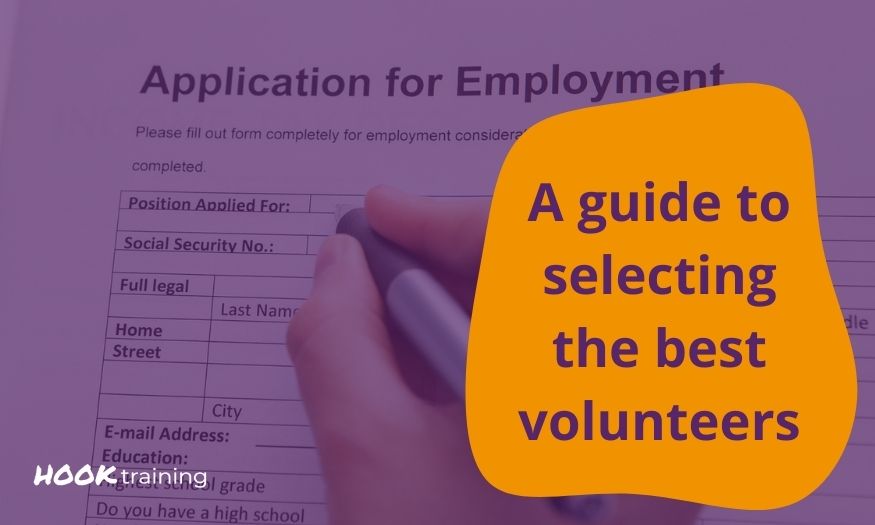Vacancy – volunteer needed to assist on stage
Paul McCrory Updated 17/6/21

Using volunteers is a key element of most informal education performances for children. But how do you identify the best volunteers in your audience?
You probably won’t need that many volunteers, but the ones you choose can absolutely make or break your performance. So it’s important to maximise the impact of their precious time on stage. Amongst children aged 4-13, competition for these vacancies will be strong. Imagine drafting a job description for your volunteers.
Equal opportunities:
Audiences, particularly children, are extremely sensitive to any perceived sense of unfairness in how you choose volunteers. Ensure that you are seen to select across as wide a range of characteristics as possible – gender, age, race, disability, position in the audience, school class etc.
Role of the volunteer:
The problem is that volunteers usually don't get to see the job criteria in advance – you have to train them in these duties live onstage. There are many possible roles which the volunteer might fulfil, including:
- to help the presenter perform a task or demonstration;
- to create audience interest;
- to represent and be a proxy for the rest of the audience on stage;
- to react strongly to a demonstration so that his/her emotions will transmit to the audience;
- to help you connect to the audience through forming a relationship with the volunteer;
- to verify conditions on behalf of the audience and prove you are not cheating;
- to add uncertainty and keep your performance fresh. Whatever role they perform, make sure it is meaningful and that you are not using volunteers gratuitously for every routine.

Selection criteria:
“Never work with children or animals” is an old showbiz adage. One of the main reasons for using volunteers is that they introduce a level of unpredictably into the performance. This is good, but a wise performer sets up this unpredictability carefully so that they strongly bias the outcome in their favour before the volunteer even speaks. So, whilst your selection has the perception of fairness across audience characteristics, you are actually recruiting spectators who meet your precise unpublished criteria. These criteria may vary slightly for each routine in which you need a volunteer.
Essential criteria:
1) Physically and intellectually capable of performing the task
As you want them to succeed at the task, it is important that you select volunteers of appropriate height, age, ability, strength, attire etc. Volunteers also need to be able to pay attention and follow instructions well.
2) Emotionally expressive
As the volunteers represent the audience, their emotions are much more contagious for the audience than your emotions. The spectators who show their emotions most easily will make the most emotionally contagious volunteers on stage, provided you can relax them enough to be themselves.
3) Willing and supportive
Choosing expressive volunteers, however, is not the same as selecting the most extrovert people. Unless you know how to manage them, audience clowns can make challenging volunteers. You want your volunteers to be comfortable onstage and willing to co-operate with you.
Desirable criteria:
4) Likeable and/or high status
Likeable volunteers will connect better with the audience and make them feel good about themselves. Also, the more they like the volunteer, the more they will pick up his/her emotions. A famous street performer, Jim Cellini, one claimed, “If you want to stop the world, stop a child.” The adults in family audiences find the innocence and playfulness of young children particularly engaging. For older audiences, it can be useful to identify and select the high-status alpha audience members as your first volunteers in order to win over the rest of the audience quickly.
5) They “get” your personality
You will essentially be doing a short double-act with your volunteer, so you need to choose the people who appear to appreciate your stage personality. Do they connect with your sense of humour? Do they look interested in you?
6) Sufficient attitude against which you can play off
Part of the art of working with volunteers is being able to bring out their natural dispositions for the audience to enjoy. To facilitate the plot of a particular routine you may need a volunteer who is especially confident, or curious, or playful, etc.
As you grow in experience your criteria for volunteers can change and you might feel more confident to pick “higher-risk” volunteers e.g. those with more of an attitude, or more reserved volunteers who need to be sensitively drawn out onstage.
Recruitment process:
Presenters often use a mix of the following techniques to recruit volunteers:
1) audition and mentally pre-select some volunteers before the presentation
As you walk around warming up the audience, you may be able to find people who would be ideally suited to a particular routine or role.
2) “thermometer moments” to take the temperature of your audience Incorporate incidents at start of the performance which are likely to provoke a strong audience response and monitor your audience closely for the most expressive members.
3) constantly audition individuals through your interactions
You can gain an enormous amount of information about prospective volunteers throughout the presentation from observing and interacting with them e.g. from their questions, answers, call-outs, attention, eye contact, laughter, and the nature and intensity of their emotional responses.
4) the “arm language” strategy
Most presenters advise against selecting children who are excitedly waving their arms and shouting out loudly, or, at the other extreme, children who only half-heartened raise their hands and make poor eye contact. The best choice is often the child who is interested and smiling, sitting upright and holding their arm up patiently and still.
5) coax volunteers from reluctant, older audiences
Some teenage audiences can be reluctant to volunteer initially. The key is to ask for the first volunteer to come with the unshakable confidence that they will obey you. Moreover than not, they will. It’s when you unconsciously reveal any doubt that they might remain in their seats that the trouble starts.
An often misinterpreted piece of advice given to presenters is that whoever they select as their first volunteer must be made to come up. If not, the audience will realise they have free-will and you will have great difficulty getting volunteers for the rest of the show. This is true, but only in the specific case where the audience are extremely reluctant to volunteer. Such audiences are actually relatively rare and the one situation you want to avoid is a prolonged battle of wills with a stubborn student whom you have chosen by mistake. The escalating desperation as you try to persuade them to come up only reinforces, in the minds of the audience, how unpleasant being a volunteer must really be. It is better to move on to another, less tenacious, person.
Some simple techniques you can try are – persuading a confident member of the audience to be your first volunteer before the presentation starts; giving them a reason to come on stage which gets them out of looking as if they were being helpful (e.g. asking to borrow their chair for the next demonstration); targeting the alpha audience members who might relish the opportunity to assert their status in front of the group.
In mixed teenage audiences of boys and girls, it is particularly important to try to involve a female as one of the first couple of volunteers, to set the tone for the rest of the show.
6) involve some adult volunteers
Routines which involve some element of jeopardy often require an adult volunteer. Choosing a parent at a family show, or a teacher at a school show, can create a fascinating dynamic. As before, look for smiling adults who hold your eye contact and appear friendly and confident.
Ongoing training:
Now you’ve chosen a volunteer carefully based on your selection criteria and recruitment process, this is only the first step in how you manage this volunteer. As they join you onstage, remember that how you are perceived to treat that volunteer will drastically affect how many applicants you get for your next vacancy.
Choose your volunteers wisely and make them heroes.
Paul McCrory is an author, trainer and coach, based in the UK. He runs HOOK training, which helps informal educators to engage their learners using interactive performing skills and psychology.
Paul McCrory
HOOK training
A version of this article was published in IntrepNEWS Sept/Oct 2013.
